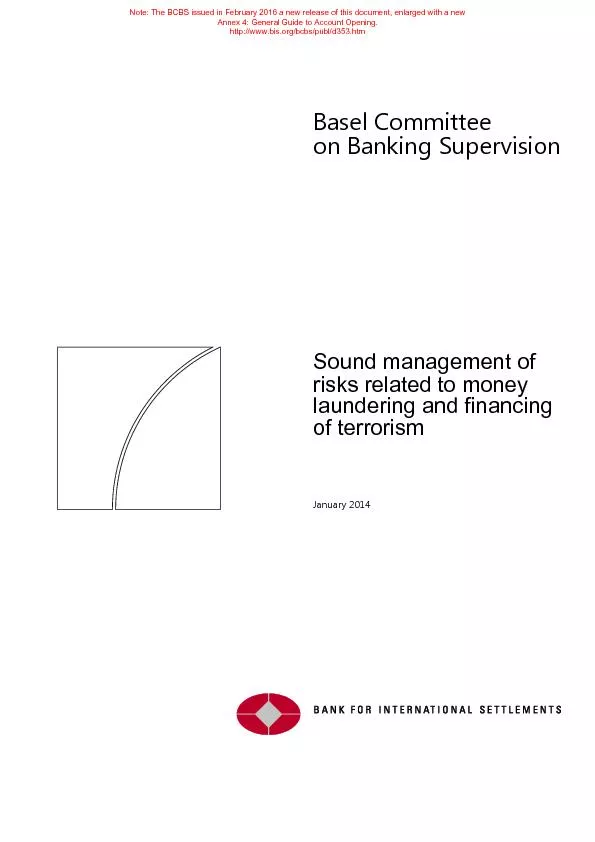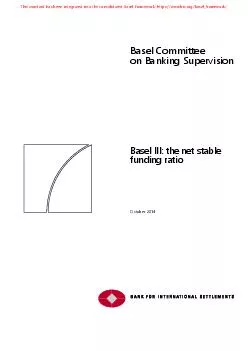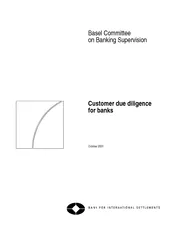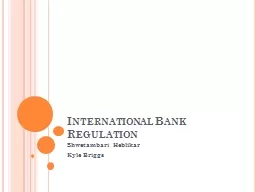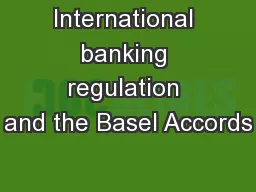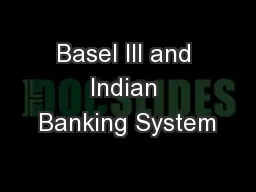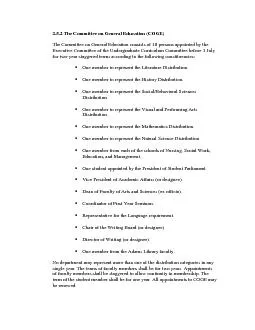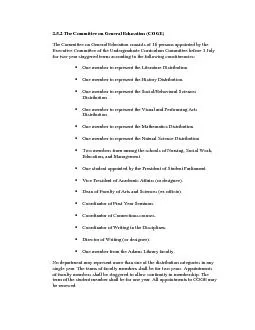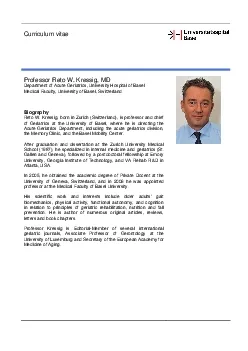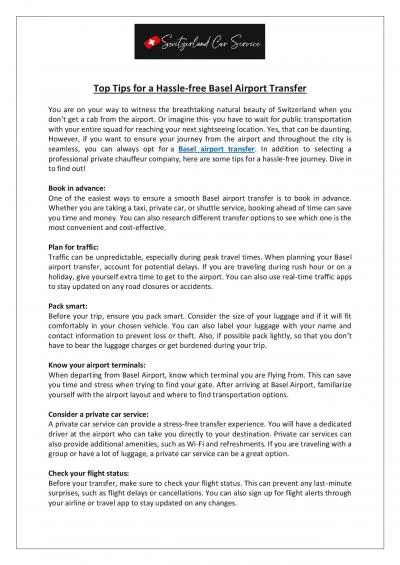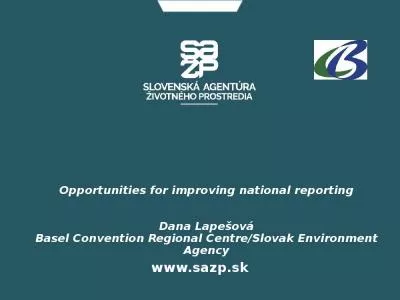PDF-Basel Committee
Author : stefany-barnette | Published Date : 2016-06-20
on Banking Supervision Sound management of risks related to money laundering and financing of terrorismJanuary 2014 Note The BCBS issued in February 2016 a new release
Presentation Embed Code
Download Presentation
Download Presentation The PPT/PDF document "Basel Committee" is the property of its rightful owner. Permission is granted to download and print the materials on this website for personal, non-commercial use only, and to display it on your personal computer provided you do not modify the materials and that you retain all copyright notices contained in the materials. By downloading content from our website, you accept the terms of this agreement.
Basel Committee: Transcript
Download Rules Of Document
"Basel Committee"The content belongs to its owner. You may download and print it for personal use, without modification, and keep all copyright notices. By downloading, you agree to these terms.
Related Documents

